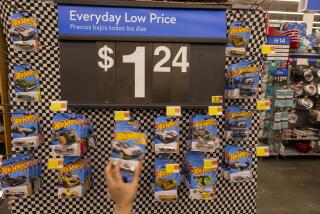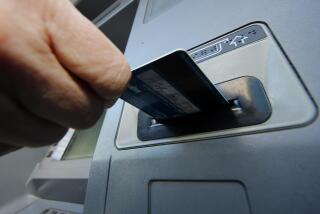Ask Laz: The big switch to chip-enabled credit cards: What you need to know
I’m getting lots of questions about Thursday’s big change in how credit and debit cards are processed. Here’s the skinny.
First, it’s not like the entire system is changing overnight. The plastic industry is in an ongoing switch from cards with magnetic strips on the back to cards with embedded microchips.
The chip-enabled cards, common in Europe and Asia, are more secure. They make it harder for hackers to get their grubby mitts on your personal info.
ASK LAZ: Smart answers to consumer questions
American card issuers and merchants have been squabbling for years about who should bear the cost of this new technology.
The big card networks like Visa and MasterCard finally lost patience and announced that, as of Oct. 1, the responsibility for compensating people for fraud will fall on whichever business isn’t chip-ready.
Consumers, therefore, won’t be left in the cold. You’ll still be protected from fraudsters. But if a merchant hasn’t installed a chip reader at the counter, it’ll be the merchant, not the bank, that has to make good.
The biggest change many consumers will see is that processing transactions will take a little longer with the new system. I tried it out at Target. You have to insert your card into a slot and leave it there until the chip works its magic. Then you have to make the scribble that passes for signatures on touch screens.
In other countries, they require PINs instead of signatures to accompany chip cards. That’s a much safer way of doing things.
U.S. card issuers and retailers decided this would be too much of a hassle for memory-impaired Americans, so we’ve gone with a less-secure process.
Thursday’s milestone notwithstanding, it will be a lengthy changeover. CreditCards.com estimates that only 40% of cardholders now have chip cards. Everyone else will get one in coming months.
Only about a quarter of merchants currently have chip-card readers installed, according to MasterCard. It’s estimated that it could take until the end of 2017 for the majority of retailers to put the new technology in place.
The card industry has more information available here.
The Consumer Financial Protection Bureau weighs in here.
And don’t fret: Your magnetic-strip card will keep working until you receive a chip card.
If you have a consumer question, email me at [email protected] or contact me via Twitter @Davidlaz.
More to Read
Inside the business of entertainment
The Wide Shot brings you news, analysis and insights on everything from streaming wars to production — and what it all means for the future.
You may occasionally receive promotional content from the Los Angeles Times.











